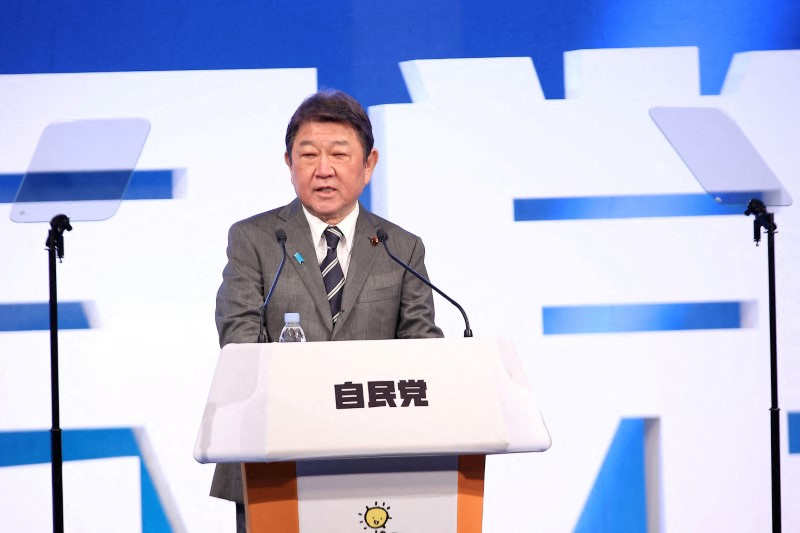Factbox-Potential candidates to be next Japanese prime minister
2024.08.14 04:55
TOKYO (Reuters) – Japanese Prime Minister Fumio Kishida said on Wednesday he would step down as prime minister next month, after a three-year tenure marked by scandal and declining public support.
Here are some possible contenders to replace him when his ruling Liberal Democratic Party (LDP) holds a leadership election next month.
SHIGERU ISHIBA, 67
A four-time candidate for party president and a former defence minister, Ishiba is yet to officially announce his intention to run in the upcoming race.
Ishiba leads in public opinion polls but may struggle to win over LDP lawmakers who play an outsize role in determining the next party head.
In a recent interview with Reuters, Ishiba endorsed the Bank of Japan’s policy of gradually raising interest rates, saying its normalisation of monetary policy could push down prices and boost industrial competitiveness.
TOSHIMITSU MOTEGI, 68
Motegi, now secretary-general of the LDP, has served in many cabinet posts, including as foreign, trade and economy ministers.
He studied at Harvard Kennedy School and worked at the Yomiuri newspaper and consulting firm McKinsey before entering politics in 1993.
Motegi has a reputation as a tough negotiator and handled talks with U.S. Trade Representative Robert Lighthizer when President Donald Trump was in office.
SHINJIRO KOIZUMI, 43
A former environment minister and the son of charismatic former prime minister Junichiro Koizumi, he trails behind Ishiba in second place in the latest Jiji Press opinion poll.
While he has cultivated an image of a reformer, he has also taken care not to offend party elders.
Educated at Columbia University, he was appointed environment minister in 2019 at the age of 38, becoming the third-youngest lawmaker of a post-World War II Japanese cabinet.
SANAE TAKAICHI, 63
Takaichi serves as minister in charge of economic security, and was credited for passing legislation to create a clearance system for economic security.
She ran against Kishida in the last party leadership race in 2021. She is known for her conservative stance, including visits to Yasukuni Shrine, a controversial site that honours Japanese war dead and is seen by some Asia countries as a symbol of past militarism.
TARO KONO, 61
Kono also ran against Kishida in the last party leadership race and is seen as a likely candidate again. As digital minister under Kishida, he has pushed to phase out the use of floppy discs, fax machines and other ageing technology in government.
Educated at Georgetown University and a fluent English speaker, the social media-savvy Kono has served as foreign and defence minister, and oversaw the rollout of the COVID-19 vaccine programme under Kishida’s predecessor, Yoishihide Suga.
He has a reputation as a maverick but toed the line on key policies promoted by former Prime Minister Shinzo Abe.
YOKO KAMIKAWA, 71
The foreign minister is a relatively low-profile figure but has attracted attention as a potential prime minister in recent opinion polls.
After graduating from the Harvard Kennedy School she worked for U.S. Senator Max Baucus.
When she was justice minister in 2018, she signed the execution papers of 13 death-row inmates who were members of the doomsday cult Aum Shinrikyo, which perpetrated the deadly sarin gas attack on the Tokyo subway in 1995.
TAKAYUKI KOBAYASHI, 49
Kobayashi, who served as the first-ever minister in charge economic security, is credited for passing legislation on economic security aimed at reinforcing critical supply chains.

Another graduate of the Harvard Kennedy School, Kobayashi started his career at the finance ministry and worked at Japan’s embassy in the United States before entering politics in 2010.
He was first elected to the lower house in 2012, and was parliamentary vice-minister of defence under Abe.








